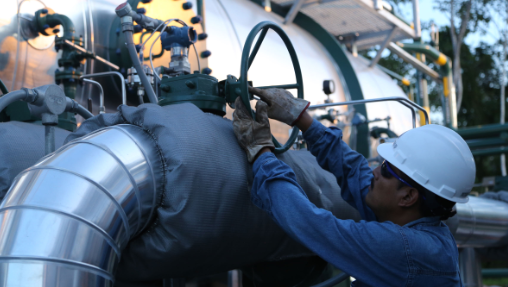S&P Global Ratings, the renowned risk rating agency, has issued a warning that if oil production is reduced, it would have to be compensated with an increase in taxes.
According to S&P, Ecuador’s public finances have improved over the past two years, albeit at the cost of a slowdown in investment in public works. However, the country’s tense governance climate and lack of institutionality have prevented investors from gaining greater confidence in Ecuador.
Carolina Caballero, the associate director of public and sovereign finance at S&P Global Ratings, explained that one of the biggest risks the next government will face is a greater demand for public spending.
“This demand is expected due to the aftermath of severe weather conditions and rising security concerns. Additionally, the fall in oil prices and lower production, if the extraction in the Yasuní ITT is suspended, pose further risks to the economy.”
Despite the recent political developments, such as the cross death, S&P Global Ratings maintains Ecuador’s rating at B- with a stable trend.
Caballero says that the current rating already incorporates structural problems, including a weak institutional framework and a history of challenging governance.
But she adds that, “the uncertainty surrounding the country’s future leadership and agenda, compounded by a fragmented electoral process, could slow economic growth.”
While Ecuador has achieved significant fiscal consolidation in recent years, reflected in reduced deficits and indebtedness, S&P Global Ratings notes that political noise and uncertainty have overshadowed the positive developments. Protests, impeachment attempts, and the cross death have weighed heavily on market perception, impeding the translation of fiscal improvements into tangible market indicators like country risk and the price of Ecuadorian bonds.
Risks ahead
Looking ahead, S&P Global Ratings identifies several risks for the Ecuadorian economy.
Managing the budget and fiscal accounts will be crucial, given lower oil prices, increased pressure for public works spending due to the winter, and the need for more investment in security, health, and education. The potential reduction in production at Yasuní ITT, resulting from a planned popular consultation, poses a high risk, as it would impact the economy and public finances significantly.
In order to compensate for the resources that would be lost from the ITT, S&P Global Ratings suggests that the government would need to implement a tax reform to increase revenue.
The previous tax reform in 2021 was deemed insufficient to reduce Ecuador’s vulnerability to oil price volatility. Alternatively, reducing public spending could be considered, but the future holds more spending pressures, making it unlikely.
The reduction in oil revenues resulting from the ITT’s abandonment would increase the fiscal deficit and, consequently, borrowing needs. The refinancing scenario for debt payment is closely monitored by S&P Global Ratings as one of the risks for the country.
Ecuador’s improved fiscal position in the past two years provides some room to manage financing needs for the current year, but fiscal consolidation must be maintained to avoid setbacks. Access to international markets remains limited, making financing from multilateral institutions like the IMF crucial.
While Chinese financing has become scarcer in recent years, developing the local capital market could provide an alternative source of financing for the government. However, the scope for financing from the Ecuadorian Social Security Institute (IESS) is becoming increasingly limited.
The government’s projection of a 2% fiscal deficit in 2023 faces challenges, as the outcome will depend on measures taken to balance taxes and public spending. There is a possibility that the deficit could be higher than projected.
Indigenous say ‘collect more taxes’
The Yasunidos environmental group proposes compensating for the fiscal gap that will arise from the ITT’s abandonment by eliminating tax benefits for the richest individuals.
The group cites tax exemptions and deductions for the rich— which according to SRI reached $6.4 billion in 2021— that could be revised to improve the state’s tax revenue.
Additionally, collecting unpaid tax debts from companies and individuals, which amounts to $1.983 billion according to Wilma Salgado, former Minister of Finance, could contribute to closing the gap.
The extent of the fiscal gap resulting from the ITT’s abandonment is a subject of disagreement. Calculations vary between experts who support the closure ($148 million annually) and those who argue for the continuation of oil exploitation ($690 million annually).
Factors such as oil prices, production levels, and the potential for increased extraction in the ITT area influence these estimates. However, there is consensus that the fiscal gap would have significant implications for public finances and the overall economy.
Critics of the Yasunidos proposal argue that raising taxes to compensate for the loss may not be straightforward, as it could lead to economic recession and adversely affect employment and household consumption. They suggest alternative measures, such as raising VAT or eliminating fuel subsidies. Additionally, the lengthy judicial processes involved in collecting tax debts further complicate the situation.
Beyond the fiscal considerations, opponents of oil exploitation in the ITT emphasize the environmental risks associated with the region’s biodiversity. The extraction process involves handling heavy oil and the reinjection of large volumes of water, presenting complex challenges and potential hazards.



0 Comments